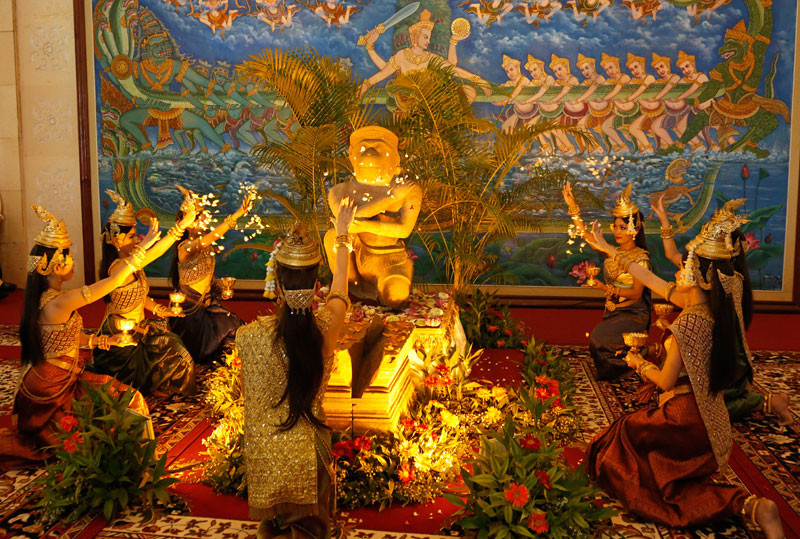Nearly five decades after a centuries-old statue of the Hindu monkey god Hanuman was looted from a temple in Cambodia, the Cleveland Museum of Art officially handed it over to the government Tuesday during a ceremony at the Council of Ministers building.
Once part of a depiction of an epic battle between two other monkey deities, the statue was carved in the 10th century and housed at Preah Vihear province’s Prasat Chen temple, which was built as part of the one-time Khmer Empire capital of Koh Ker.

It is believed that thieves severed the sandstone statue from its base some time in the 1960s.
Evidence uncovered late last year by the Cleveland Museum showed that the statue’s head and body were offered for sale in Bangkok in 1968 and 1972, respectively, according to a statement posted to the museum’s website on Monday.
This new information suggested that the statue was illegally taken out of Cambodia in the late 1960s, Cleveland Museum director William Griswold said Tuesday in an interview at the National Museum in Phnom Penh.
“We had established the piece had appeared for the first time on the art market in Asia during the early years of civil unrest in Cambodia,” he said.
After leaving Thailand, the statue made its way to New York, where in 1982 the museum bought it.
Sonya Rhie Quintanilla, the Cleveland Museum’s curator of Indian and Southeast Asian art, who joined Mr. Griswold at the National Museum, said she began an investigation into the statue’s provenance in 2013 after seeing reports that its pedestal had been found at Prasat Chen.
Then, in January 2014, she traveled to the temple with a mold of the Hanuman to see if the base had indeed been found.
“So I checked…and was able to determine nothing that had been excavated at that time could actually be shown to have been part of the Cleveland Hanuman,” she said.
Five months later, a government excavation began at the temple and additional pedestals were found, including the Hanuman’s true base, said Kong Vireak, the director of the National Museum.
“We needed hard evidence to be sure it was looted and, with Hanuman, the base matched the statue,” he said.
Mr. Griswold said that when he visited Cambodia in February he was informed of the match and discussions immediately began for the statue’s return.
Starting Wednesday, the National Museum will exhibit the Hanuman along with another statue it was originally displayed with at the temple.




